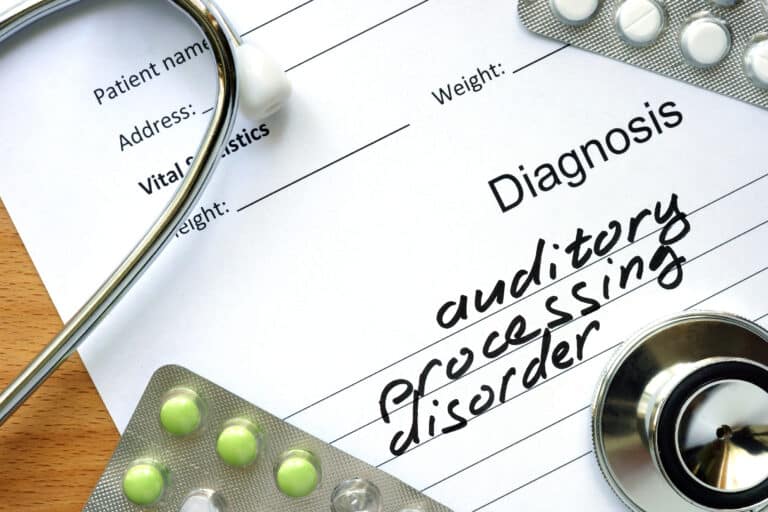
If your child doesn’t quite seem to be hitting certain milestones, it could be an effect of a developmental disorder such as dyspraxia.
In this blog, we’ll look at the following questions:
- What is dyspraxia?
- What are the signs of poor motor skills in toddlers?
- What is the gross motor development milestone in a child?
- Do all people with autism have motor skills and balance issues?
- What fine motor skills are developed as a toddler?
- How do I improve my child’s motor skills?
- What activities can help support gross motor skills?
- What activities develop fine muscle coordination of a child?
What is Dyspraxia?

Dyspraxia, also known as Developmental Coordination Disorder (DCD), is a neurological condition that affects motor coordination and movement. In other words, it impacts a person’s physical coordination and internal task processes. People with dyspraxia tend to appear clumsy and uncoordinated, performing at a lower level than expected for their age group.
What Are the Signs of Poor Motor Skills in Toddlers?
Toddlers with poor motor skills display several identifiable signs. These include poor fine and gross motor abilities, specifically for their developmental milestones. This can impact their confidence in taking part in activities.
To further breakdown the signs of poor motor skills in toddlers, look for these possible effects:
- Developmental delays. Underdeveloped motor skills in relation to their peers or what’s expected for their age.
- Poor gross motor skills. Difficulty coordinating movements such as walking, running, jumping, climbing, and other playground activities (e.g., hopscotch, jump rope, throwing and catching a ball, etc.).
- Poor fine motor skills. Difficulty with smaller physical movements such as using a pencil or scissors, opening and closing items, buttoning or zipping clothes, drawing, etc.
- Poor spatial awareness. Difficulty navigating their surroundings, running, or bumping into objects.
- Withdrawal from activities. Avoiding physical activities due to difficulties with movement and coordination, exhibiting embarrassment or frustration when trying to take part in daily activities.
What is the Gross Motor Development Milestone in a Child?

Gross motor skills include the functions of the larger muscles in the arms, legs, and torso. These muscles are responsible for abilities such as crawling, walking, running, jumping, throwing and catching, and climbing.
These are general expectations and don’t perfectly apply to children both with or without developmental disabilities:
By 3 Months
- Turns head to both sides while lying on back and stomach
- Kicks legs and arms on back
- Pushes up on forearms while on stomach
- Rolls from stomach to back
By 6 Months
- Rolls from back to stomach
- Rocks in a circle while on their stomach
- Able to move head when in any position
- Able to lift themself into a crawling position
By 12 Months
- Crawls or scoots by themself
- Moves into a standing position using objects around them
- Moves from sitting to crawling or stomach position
- Sitting up without support
By 18 Months
- Walks with minimal to no assistance
- Pushes and pulls toys
- Crawls upstairs independently
- Walks up and down stairs with assistance
By 2 Year Old
- Walks up and down stairs with no assistance
- Runs and jumps
- Climbs onto furniture
- Kicks and throws a ball
By 3 Years Old
- Climbs, slides, and swings on playground equipment
- Climbs stairs without using the railing
- Throws and catches a ball
- Squats and stands up without assistance
By 4 Years Old
- Hops or balances on one leg
- Rides tricycle with some or no assistance
- Throws overhead and catches a bouncing ball
- Gallops and skips
By 5 Years Old
- Climbs playground ladders
- Runs around obstacles
- Walks upstairs holding an object
- Jumps over an object and lands with both feet together
Do All People with Autism Have Motor Skills and Balance Issues?
Not all people with autism have difficulties with balance and motor skills. These are, however, common difficulties with ASD, affecting 87 percent of those with an autism diagnosis. Autism is a neurodevelopmental disorder impacting brain processes. Because of this, motor functions can easily be affected.
What Fine Motor Skills Are Developed as a Toddler?

Fine motor skills include movements of the smaller muscles. Fine motor development typically relates to the functions of the hands, wrists, fingers, eyes, and mouth.
Children develop essential fine motor skills during their toddler years (around 1 to 4 years old).
Typically, expected developmental milestones for fine motor skills are broken down as follows:
By 1 to 2 Years Old
- Brings objects to mouth
- Holds bottle or cup without assistance
- Claps hands
- Waves hello and goodbye
- Holds a marker or crayon
- Picking up things with pinching (using thumb and finger)
By 2 to 3 Years Old
- Turning the pages of a book
- Draws pictures, imitates shapes
- Builds and stacks toys (e.g., blocks, big legos, etc.)
- Folds a piece of paper in half
- Begins to use scissors
- Strings large beads on a stiff string
By 4 to 5 Years Old
- Does simple puzzles
- Uses a spoon or fork
- Buttons and zips up clothes
- Colors inside lines
- Uses scissors efficiently
- Begins tying shoelaces
These are the general expectations for a child of a specific age. Children may develop skills earlier or a bit later than their age group. This doesn’t always indicate a condition or problem. If you suspect your child may have a development-related condition, consult with their primary care physician.
How do I Improve My Child’s Motor Skills?

You can try different activities to help your child with gross and fine motor skills. It’s always important to encourage games and exercises to improvise motor skills in your child, regardless of whether or not they show signs of developmental delays.
What Activities Can Help Support Gross Motor Skills?
- Hula hoops, hopscotch, and jump rope
- Bike and scooter riding
- Going on walks and hikes with uneven terrain
- Swinging and climbing playground equipment
- Dancing
- Bouncing, throwing, and catching balls
- Jumping on trampolines
- Swimming and playing sports
- “Simon Says” or “Patty Cake”
- Hide-and-Seek or Tag
What Activities Develop Fine Muscle Coordination in a Child?
- Arts and crafts
- Drawing and painting
- Sidewalk chalk
- Hole punching
- Cutting and pasting paper
- Stringing beads or Cheerios
- Peeling and placing stickers
- Shaping and rolling Playdough, pizza or cookie dough, or clay
- Picking up objects with kitchen tongs, tweezers, or clips
- Building blocks and puzzles
- Playing with small toys
- Tying shoelaces
- Buttoning and zipping clothes
- Putting toothpaste on a toothbrush, turning on the tap, and brushing teeth
- Scooping sand or other fine objects with a spoon or shovel
- Collecting items (e.g., leaves, toys, grocery items, etc.)
Staying consistent and encouraging practice is key to seeing your child progress in their motor skills. When you don’t see progress in your child, reaching out for professional help and learning how you can better support your child can be beneficial.






